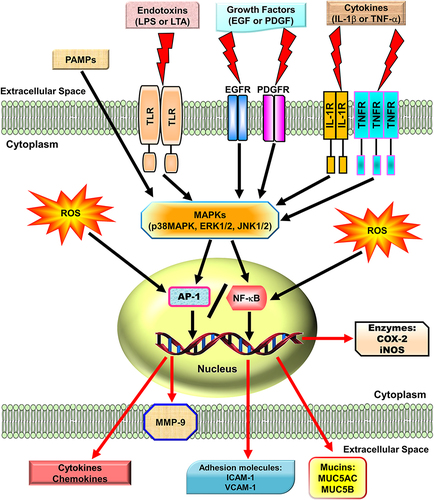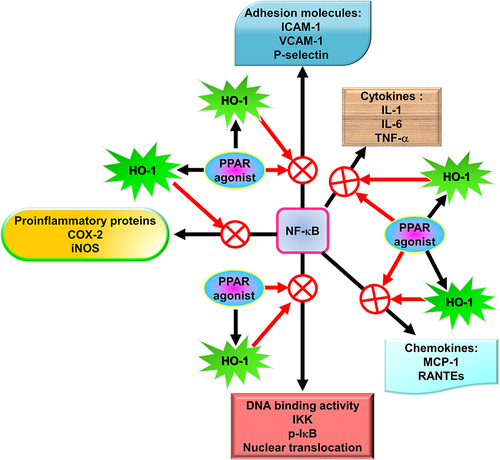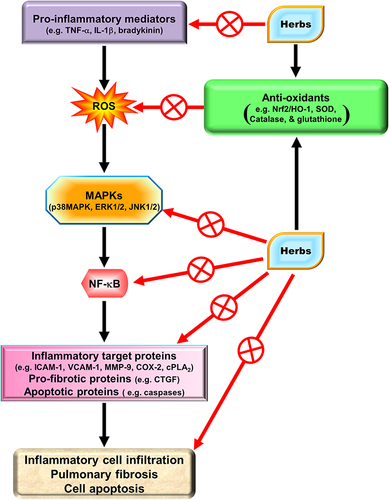Figures & data
Figure 1 The roles of ROS, pro-inflammatory mediators, and transcription factors AP-1 and NF-κB in pulmonary inflammatory diseases. Pathogen-activated molecular patterns (PAMPs), including endotoxins (LPS or LTA), growth factors (EGF or PDGF), and cytokines (IL-1β or TNF-α), activate downstream pathways (p38 MAPK, JNK1/2, and ERK1/2) via their respective receptors (TLR, EGFR, DPGFR, IL-1R, and TNFR) to promote transcription factors NF-κB and AP-1 activities also activated by ROS, leading to genes transcription (including cytokines, chemokines, MMP-9, COX-2, iNOS, ICAM-1, VCAM-1, MUC5AC, and MUC5B) and pulmonary inflammation.

Figure 2 The functions of PPARs agonists in pulmonary inflammation. PPARs agonists and PPARs agonist-induced HO-1 upregulation can inhibit NF-κB activity via blocking IKK activity and IκB phosphorylation, leading to suppression of NF-κB nuclear translocation and DNA binding activity and in turn reduction of gene expression including MCP-1, iNOS, VCAM-1, ICAM-1, P-selectin, IL-1, IL-6, TNF-α, COX-2, and RANTEs.

Figure 3 The anti-inflammatory, anti-fibrotic, and anti-apoptotic mechanisms of Chinese herbs in the lungs. Herbs can target individual signal molecules including ROS, MAPKs, and NF-κB as well as pro-inflammatory mediators to block the expression of pro-inflammatory proteins, pro-fibrotic proteins, and pro-apoptotic proteins.

Table 1 The Effects of Herbal Compounds in Pulmonary Inflammation
